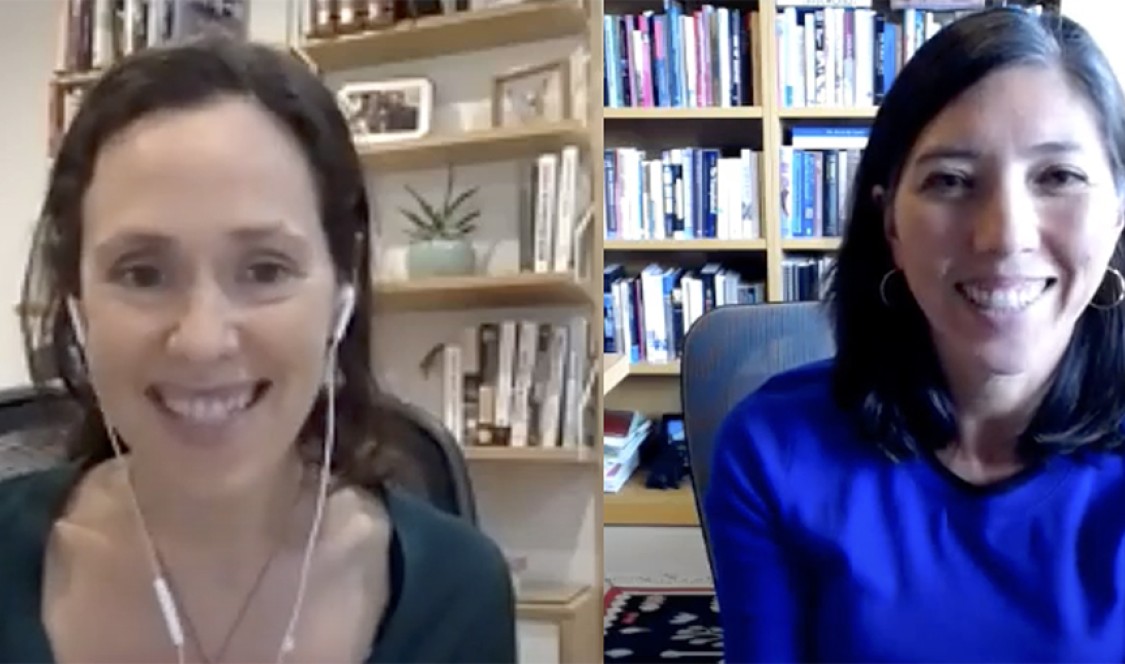To navigate a presidential election held during a pandemic, and amid high-pitched political polarization, CMC History Professors Lily Geismer and Tamara Venit-Shelton are offering an historical guide.
The pair came together in the days before the election to record a video to explain the various scenarios that could play out post-Election Day 2020.
“The possible post-election scenarios each have a history,” said Venit-Shelton, a social historian who focuses on 19th Century U.S. history. “For instance, if the 2020 results are delayed or contested, it will by no means be the first time that has happened.”
In the video, Venit-Shelton and Geismer offer concise, historically based explainers while they explore topics ranging from the Electoral College to media projections of election results.
“We wanted to produce something that is accessible, easy-to-understand and reassuring,” said Venit-Shelton. “It’s important for us to use our historical perspectives and examples to say, ‘Yes, we are living in extraordinary times but there are lessons in the past that can give us some kind of sense of what the possibilities might be.’”
But Venit-Shelton and Geismer also hope students use the video as a reference for fact-checking. “There is so much false information and oversimplified information out there, we were trying to think of ways to use our knowledge, to clear up historical inaccuracies,” said Geismer, whose research and teaching focuses on 20th century political and urban history in the United States.
“We wanted to produce something that is accessible, easy-to-understand and reassuring,” said Venit-Shelton. “It’s important for us to use our historical perspectives and examples to say, ‘Yes, we are living in extraordinary times but there are lessons in the past that can give us some kind of sense of what the possibilities might be.’”
But Venit-Shelton and Geismer also hope students use the video as a reference for fact-checking. “There is so much false information and oversimplified information out there, we were trying to think of ways to use our knowledge, to clear up historical inaccuracies,” said Geismer, whose research and teaching focuses on 20th century political and urban history in the United States.
The video is part of a series launched over the summer by CMC’s history department, tapping into relevant, of-the-moment topics. For instance, to deepen an understanding of the civil rights demonstrations against the California mission system, Venit-Shelton recorded, “Who was Junipero Serra?” While, Geismer recorded, “What is Redlining?” to explain the legacy of institutionalized racial segregation and inequality.
“We are committed as a department to produce videos that provide historical perspectives and methods of thinking and analyses of contemporary issues,” said Venit-Shelton.
Geismer added: “We see this video series as part of a bigger effort for us to think about how to make history relevant. There are so many ways that it is relevant, and we’re trying to try to show students that.”
Venit-Shelton said up to Election Day, she was advising her students – for whom 2020 marks their first time voting in a presidential election—on how the election process works. “I think it’s important for students to have multiple people in their lives to check in with them and make sure they have the information and resources they need to begin their political lives,” she said.
For Geismer, she thinks history provides a much-needed perspective to understand how Americans arrived at this moment. “Studying history offers a guide for understanding the context of what’s going on around us,” she said.
Visit the CMC History department’s YouTube Channel to view more of their videos.
— Anne Bergman

